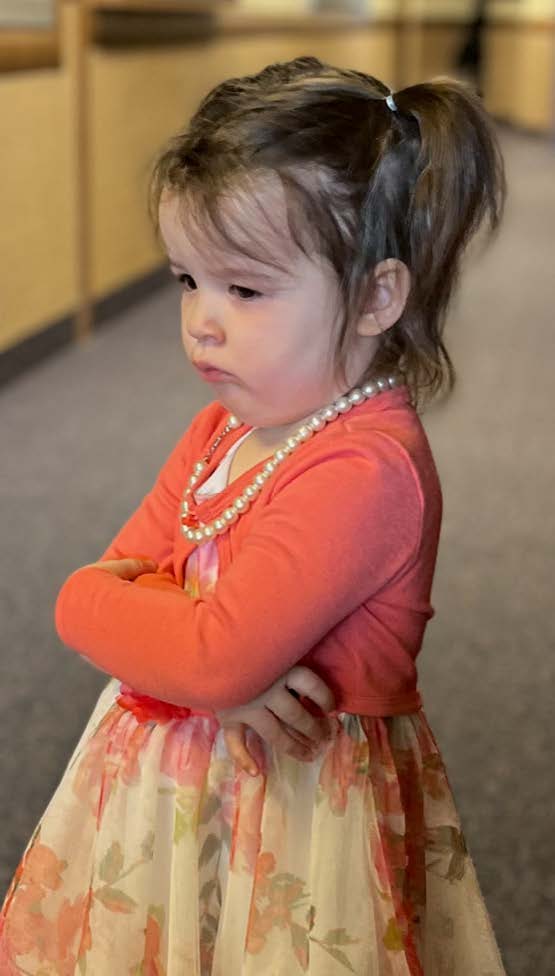Proactive Strategies for Teaching Discipline
Being a parent or caregiver of a child of any age can be extremely rewarding, and it can also be challenging at times. This is especially true whena toddler is throwing a temper tantrum, a school-age child is refusing to do homework, or a teen is challenging the family’s rules. It is important to know that you are not alone in a struggle to find a balance of discipline while letting kids be kids.
On the topic of discipline, it is important to understand a common meaning of discipline. According to the Extension Alliance for Better Child Care (2019), “discipline is a method of teaching responsibility and self-control in a positive way.” Discipline is one of the ways parents or caregivers teach children skills to help them grow and develop into adults.
Upon knowing discipline is a form of teaching, it is also important to understand that a child’s developmental stage can impact the best ways parents/caregivers can teach (discipline) their child. What works for a two-year-old will probably not work for a nine-year-old. For example, as discussed by The University of Maine in Discipline that Works: The Ages and Stages Approach, two-year-old’s are adaptive, less demanding, and willing to accept affection, and setting/following routines, especially with bedtime and secure items, is a good start. Some things to consider in other situations are redirecting them or changing their scenery.
A nine-year-old may come across as independent, dependable, cooperative, and responsible. Nine-year-old’s may show anger toward their caregivers but will be simultaneously proud of them and are loyal to family and friends. Their interests will begin to spread beyond their homes and families, and they might resist being treated as a child and told what they can and can’t do. A tip as a caregiver of a nine-year-old is to consider saving “No” for the most important items.

Photo: John L. Hawley, MSU Extension
In the article Positive Discipline and Child Guidance, Angie Fletcher from the University of Missouri suggests proactive strategies that can help caregivers minimize misbehavior. All of these proactive strategies listed can work for all ages (2, 6, 12, or even 16); with consideration of the child’s age and what they can process.
- When setting rules, make sure they are clear and consistent.
- Provide meaningful choices that help encourage self-control.
- Help children understand how their actions affect others.
- Before a situation gets out of control, take action.
- Set a good example for kids and encourage them.
Fletcher also suggests five strategies that caregivers can use in responding to misbehavior.
Natural consequences are where kids experience the consequences of their actions, usually the hard way. For example, Jill forgets to water her house plant, and over time, the plant dies. Natural consequences are an excellent teaching method; however, they should only be used when situations are not dangerous.
Logical consequences are when the result of a child’s action matches their misbehavior. Some classic examples of this are a child drawing on the wall and having to clean it up or a teen staying out past curfew and not being allowed to go out for a while.
Fix-up is when a child hurts or damages something; they need to help fix it or clean up the situation. An example of this might be two siblings getting into a fight, and one cries, and the other would need to apologize and help fix the situation.
Time out is when children spend time alone in a specific place. By doing this, kids can reflect on their behavior away from the situation. A time-out length suggestion is one minute per age of the child. For example, “Jim, you know our rules about not hitting, and because you hit your sister, please take a time out and think about how your sister felt when you hit her.” It is also important to follow up with a rational discussion with a child after the time out, as they have had a chance to calm down and can come back to a calm state of mind.
Redirecting is a strategy that can be used when a child is not following rules or is not cooperating to get them focused on another task. For example, “Tom, could you help me set the table for dinner? You have been trying to tie those shoes for a while; maybe it is time to take a break.”
When teaching kids, there are so many different techniques and methods that can be used to help caregivers. However, the important thing to note is to use those methods or techniques that work for you and your family. If you are interested in more information on parenting, ages and stages strategies, or discipline, visit the online resource for caregivers of zero to 19-year-olds, Parenting Montana, at parentingmontana.org
Carrie Guderjahn is the MSU Extension Carbon County FCS and 4-H Youth Development Agent.
